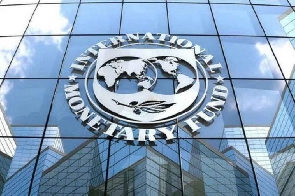The International Monetary Fund approved a $2.34 billion financing package for Kenya to support the country’s COVID-19 response and address an urgent need to reduce debt vulnerabilities.
Approval of the so-called Extended Credit Facility and Extended Fund Facility will enable immediate disbursement of about $307.5 million for budget support in the East African nation, the Washington-based lender said Saturday in an emailed statement.
“Kenya was hit hard at the onset by the Covid-19 pandemic,” the IMF said. “With a forceful policy response, the economy has been picking up heading into 2021 after likely posting a slight contraction of 0.1% in 2020. Even with this recovery, challenges remain in the return to durable and inclusive growth, and past gains in poverty reduction have been reversed.”
Kenya’s debt remains sustainable, although it is at high risk of debt distress, the IMF said. Fiscal and balance-of-payments financing needs remain sizable over the medium term.
Support from the G-20 under the Debt Service Suspension Initiative and development partners will contribute to closing the financing gap in 2021, along with financing from capital markets, according to the lender.
Public debt in East Africa’s largest economy stood at 7.35 trillion shillings ($67.5 billion) as of end-January, according to the Central Bank of Kenya.
Total debt increased by 659.5 billion shillings from the start of the fiscal year in July. Domestic debt rose 11% in the seven months through January to 3.53 trillion shillings.
Public and publicly guaranteed external debt increased 5.1% to $34.68 billion at the end of January, from $33.01 billion at the end of June.
Confirmed coronavirus cases in Kenya are at 136,893, with 2,186 fatalities as of April 2, according to the health ministry.
Demand for oxygen in the nation has more than doubled to 880 tons a month from 410 tons before the coronavirus pandemic struck, Health Secretary Mutahi Kagwe said March 30.
Public health facilities have 16% of the gas they need, Kagwe said. While the state has 73 oxygen plants across the country, some of the facilities are producing gas with concentration levels that are at a “significant variation” from the government’s own standards, he said.
Kenya’s gross economic product is projected to expand 7.6% this year and 5.7% next year. Public debt as a percentage of GDP is expected to rise to 70.4% in 2021 from an estimate of 65.8% last year, climbing further to 72.6% in 2022, the IMF said.
“The support and reforms set out in this IMF program will go a long way in mitigating the effects of the pandemic, while aiding in the achievement of the governments policy objectives set out in the recently approved 2021 Budget Policy Statement as well as Medium-Term Plan II,” National Treasury Secretary Ukur Yatani said in a statement.
Africa Business News of Sunday, 4 April 2021
Source: bloomberg.com







![NPP Flagbearer, Dr. Mahamudu Bawumia [L] and NDC Flagbearer John Mahama NPP Flagbearer, Dr. Mahamudu Bawumia [L] and NDC Flagbearer John Mahama](https://cdn.ghanaweb.com/imagelib/pics/869/86902869.295.jpg)









